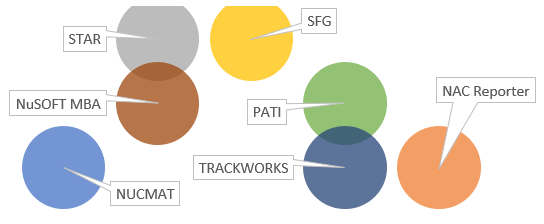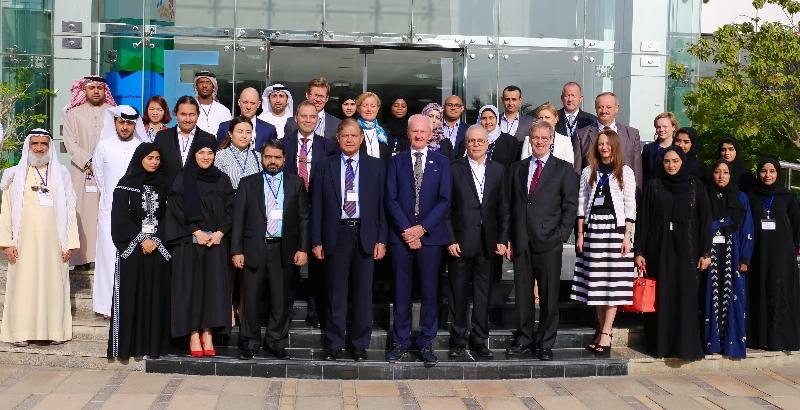Muutamme uusiin, monenlaisten mahdollisuuksien, tiloihin Helsingin Pitäjänmäen alueelle.
Uusi posti- ja käyntiosoitteemme on 27.3.2024 alkaen
Atomitie 5, 00370 Helsinki.
Muutamme uusiin, monenlaisten mahdollisuuksien, tiloihin Helsingin Pitäjänmäen alueelle.
Uusi posti- ja käyntiosoitteemme on 27.3.2024 alkaen
Atomitie 5, 00370 Helsinki.
Tero Karttunen on siirtynyt uusiin tehtäviin Plansorin ulkopuolelle.
Kiitämme Teroa ja toivotamme menestystä tulevaisuuteen!
Mika Rättö on aloittanut vanhempana mekaniikkasuunnittelijana. Mikalla on vuosikymmenten kokemus tuotekehityksestä ja mekaniikkasuunnittelusta.
Toivotamme Mikan tervetulleeksi joukkomme!

EU päivittää ajoittain Neuvoston Asetuksen N:o 428/2009 kaksikäyttötuotteiden vientiä, siirtoa, välitystä ja kauttakulkua koskevan yhteisön valvontajärjestelmän perustamisesta liittyvät liitteet. Viimeisin päivitys tapahtui lokakuussa 2019 Delegoidun Asetuksen 2019/2199 muodossa.
Luettelon hakusovellus Plansorin sivuilla on myös päivitetty. Nyt haku sisältää myös lyhenteet ja määritelmät.
Hyviä selaushetkiä.

Accounting and reporting nuclear material can be a tricky challenge. Small scale operations like Location Outside Facilities (LOF) may mange with spread sheet and manual reporting. However, when number of items increases it is time to look for a dedicated software.
I have listed commercially available software for you to start with. The alphabetical listing includes product link and short quote from product information. After listing I give some hints how to find the best choice for your needs.
All software have in common the ability to account and report in general. Differences start to emerge when taking a closer look, like IAEA vs Euratom rules or multi-MBA vs. one MBA. Set of features varies from supported languages to operational planning features. That´s why there is no one solution for all. One must identify the best software for his specific use case.
1. What is my use case?
Before starting the software selection process, one should take a moment and consider for example following questions:
2. Short-listing
Now you have set the big picture for the software capability. Next step could be short listing the software by sending preliminary requirements list to the vendors and finding best fitting solutions. At this stage one can have simple requirements like
Based on the responses you can short-list the vendors for the next step.
3. Requesting the proposals
Describing your needs in concise requirements helps to manage the procurement process. Listing the requirements can take time, especially if you have no prior system in place. A good approach is to collect your stakeholders (safeguards, procurement, IT, etc.) together and start collecting the requirements. When you have the requirements collected it is time to send a request for proposal (RFP) to the short-listed vendors.
4. Selection of software and implementation
Analysis of the received proposals and clarification meetings are needed to grade the proposals. Some requirements are easy to compare between software, while some are more challenging. Software demonstrations and hands on testing of software gives valuable insight.
When software contract is in place the work truly starts and one must be prepared to take actively part to the software implementation. Supplier will need information on your NMAC system (MBR, KMP structure), reporting details, user roles to use, etc., to set up the system. Approving the software to operational use requires testing.
There are commercial software available for NMAC needs.
However, there is no software that would fit everyone. The best choice for your use case can be found by listing your needs and comparing the software.
Useasti mietitään mikä nyt sitten on ydinmateriaalia tahi kaksikäyttötuote.
Sehän selviää helposti Komission Asetuksesta 428/2009, tosin parisataa sivuisen dokumentin selaaminen käy työstä. Lisäksi pitää muistaa etsiä se voimassa oleva versio.
Olen usein miettinyt voisiko tuota selaamista jotenkin helpottaa?
Olen lähestynyt asiaa yksinkertaisella haku-/selaustyökalulla, joka löytyy Plansorin uudesta Ydinmateriaalivalvonnan tukiportaalista. Portaaliin on kerätty muutakin ydinmateriaaleihin ja vientivalvontaan liittyvää aineistoa.
Hyödynnä portaalia ja ota yhteyttä, kun haluat räätälöityjä palveluja.
Since the 1990’s actors on non-proliferation issues in the Nordic countries have gathered to discuss of non-proliferation issues. This year the seminar had the theme “Additional protocol 20 years” and a lot to update since the previous seminar was arranged in 2010. The seminar had around 50 participants representing Swedish, Norwegian and Finnish organizations as well as the international organizations (IAEA, European Commission). The seminar was arrangad by SSM (Sweden) this time.
From a distance the Nordic countries, Scandinavia, is considered to be coherent area. However, when taking a closer look differences often emerge. One of the separating issues is the fact that Norway is not part of the European Union and works only with IAEA while other Nordic countries are under the radar of Euratom also.
Despite this difference, the main theme of Additional Protocol and its impacts to the operations, was concluded to have improved the confidence on non-proliferation without significant change of the amount of work. In many cases the amount of inspections was decreased due to the Integrated Safeguards and State Level Approach taken by the IAEA.
Other differentiating issue is the scope of the use of nuclear energy. Sweden and Finland have power and research reactors at different life cycle states and final spent fuel repository projects going on. On the other hand, Norway has mainly oversight of research reactors. The geological disposal places new kind of challenge to the non-proliferation. Until now one has had the option to reverify nuclear material if needed, i.e. identification of the spent fuel assembly. The idea of final disposal is to bury the assemblies in the bedrock so reverifying is not any more viable option. To meet this challenge more emphasis is placed to analyze the material before disposal. SKB (Sweden) has identified variety of techniques for a practical measurement system. Techniques are being developed also in Finland, like Passive Gamma Tomography by STUK and Helsinki Institute of Physics.
It was very nice to hear how varied the needs and actions are within the Nordic region. Sharing experiences has always been an asset within the Nordic countries and seems that this “good practice” continues to live also for non-proliferation.

I had the privilege to share my facility operator experiences to the new comers on the IAEA Interregional Training Course in UAE.
Developing a legislation and requirements for use of nuclear energy is not just a top down exercise. Of course, a lot of the requirements come from international agreements (like INFCIRC/140 Non-proliferation treaty), but a lot resides on the operations conducted with. Each country and operator have an unique set of nuclear energy applications so requirements vary.
However, some universal concepts for managing safety, security and safeguards exist. IAEA has described the Safeguards by Design (SBD) concept in specific guides. This concept includes also the 3 S’s, safety, security and safeguards, meaning a balance between the three aspects.
My experience is that application of these abbreviations is just business as usual, communicating and sharing relevant information between parties sooner than later.